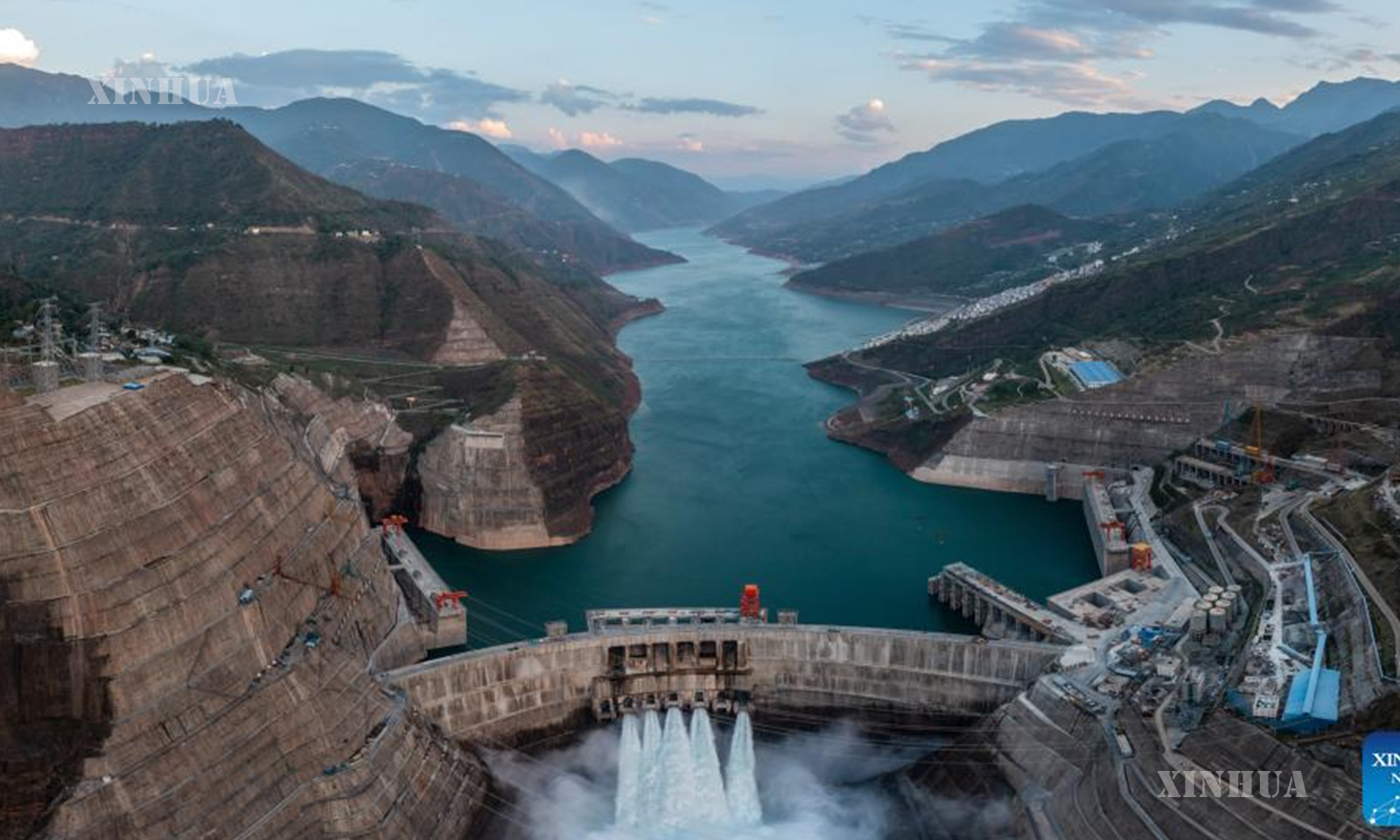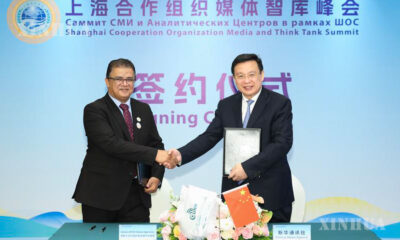Science & Technology
တရုတ်နိုင်ငံ အနောက်တောင်ပိုင်းရှိ ရေအားလျှပ်စစ်စက်ရုံတွင် ဓာတ်အားထုတ်ယူရေးယူနစ်အသစ် စတင်လည်ပတ်

ပေကျင်း၊ ဇူလိုင် ၆ ရက် (ဆင်ဟွာ)
တရုတ်နိုင်ငံ အနောက်တောင်ပိုင်းရှိ ကျင်းဆားမြစ်၏ အဓိကရေစီးကြောင်းပေါ်တွင် တည်ရှိသော ရေအားလျှပ်စစ်စက်ရုံမှ ဒုတိယမြောက် ဓာတ်အားထုတ်ယူရေးယူနစ်သည် ၇၂ နာရီကြာ စမ်းသပ်လည်ပတ်မှု အောင်မြင်ပြီးနောက် ဓာတ်အားထုတ်ယူရေးလုပ်ငန်းများ စတင်လည်ပတ်နေပြီဖြစ်ကြောင်း သိပ္ပံနှင့်နည်းပညာ နေ့စဉ်သတင်းစာက ဇူလိုင် ၅ ရက်တွင် ဖော်ပြခဲ့သည်။အဆိုပါ Batang ရေအားလျှပ်စစ်စက်ရုံတွင် ကီလိုဝပ် ၂၅၀,၀၀၀ ထုတ်ယူနိုင်သော ယူနစ် ၃ ခု တပ်ဆင်ထားပြီး စုစုပေါင်းထုတ်ယူနိုင်စွမ်းမှာ ကီလိုဝပ် ၇၅၀,၀၀၀ ရှိကြောင်းသိရသည်။
၎င်း၏ ပထမဆုံး ဓာတ်အားထုတ်ယူရေးယူနစ်ကို မေလ ၁၅ ရက်က စတင်လည်ပတ်ခဲ့ပြီး တတိယယူနစ်မှာမူ ဇူလိုင်လလယ်တွင် စတင်လည်ပတ်နိုင်မည်ဟု မျှော်မှန်းထားသည်။
ဤရေအားလျှပ်စစ်စက်ရုံသည် အပြည့်အဝစတင်လည်ပတ်ပါက တစ်နှစ်လျှင် ကီလိုဝပ်နာရီ ၃ ဘီလီယံကျော်သော သန့်ရှင်းစွမ်းအင်ကို ထုတ်လုပ်ပေးနိုင်မည်ဖြစ်ပြီး အိမ်ထောင်စုပေါင်း ၁.၇၅ သန်း၏ တစ်နှစ်တာ လျှပ်စစ်လိုအပ်ချက်ကို ပြည့်မီစေရန် လုံလောက်မည်ဖြစ်ကြောင်းသိရသည်။
အဆိုပါအချက်သည် စံချိန်မီကျောက်မီးသွေး တန်ချိန် ၁.၀၅ သန်း သုံးစွဲမှုကို သက်သာစေပြီး ကာဗွန်ဒိုင်အောက်ဆိုဒ်ထုတ်လွှတ်မှုကို တစ်နှစ်လျှင် တန်ချိန် ၃.၁၅ သန်း လျှော့ချနိုင်ခြင်းနှင့် ညီမျှကြောင်းသိရသည်။ (Xinhua)
—————————–
English Version
New generating unit at SW China hydropower station starts operation
BEIJING, July 5 (Xinhua) — The second generating unit at a hydropower station located at the main stream of the Jinsha River in southwest China, has been put into operation after a successful 72-hour trial, according to a report in the Science and Technology Daily on Saturday.
The Batang hydropower station is equipped with three 250,000-kilowatt power generation units, capable of a total installed capacity of 750,000 kilowatts.
Its first power generation unit was put into operation on May 15, while the third unit is expected to start running in mid-July.
Once this power station is fully commissioned, it will be capable of providing more than 3 billion kilowatt-hours of clean energy annually, sufficient to meet the annual electricity consumption of 1.75 million households.
This, notably, is equivalent to saving 1.05 million tonnes of standard coal and reducing carbon dioxide emissions by 3.15 million tonnes per year.
English Caption
Aerial panoramic photo combined on May 29, 2022 shows a view of the Baihetan hydropower station in southwest China’s Yunnan Province. (Xinhua/Hu Chao)






